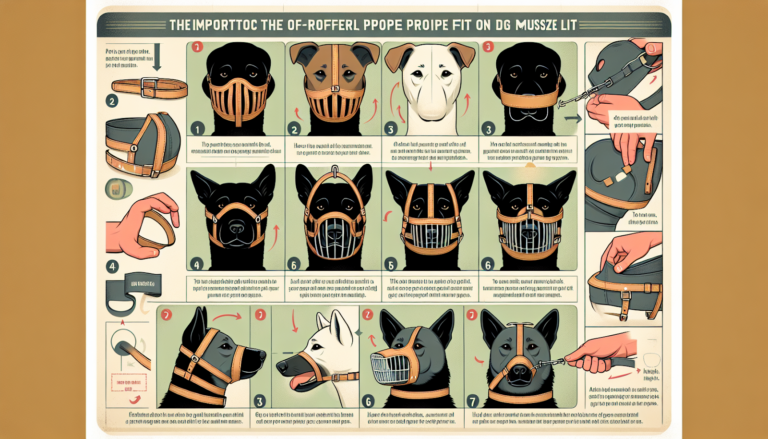How To Find the Best Pet Insurance

As a pet owner, you naturally want the best for your furry, feathered, or scaled friend. From the food they eat to the toys they play with, every decision that you make impacts their well-being. This responsibility extends to the health care they receive, making it imperative for you to find the best pet insurance. But how do you sift through the many options available and select the one that’s right for both you and your pet? In this article, we’ll explore the steps and considerations necessary to make an informed decision.
Understanding the Basics of Pet Insurance
Pet insurance, like human health insurance, helps cover the costs of veterinary care. When your pet gets sick or injured, having insurance can significantly reduce the financial strain of the medical bills. However, not all pet insurance plans are created equal. Some cover routine check-ups and vaccinations, while others only kick in for major medical events. There are even plans that cater specifically to unique needs, such as those of exotic pets or pets with chronic conditions.
The Importance of Research
Before diving into the details of various pet insurance policies, it’s crucial to understand what you and your pet specifically need. For instance, if your pet is prone to certain genetic conditions or has a history of illness, you’ll want a policy that covers those specifics. On the other hand, if you’re mainly concerned about potential accidents or injuries, there are plans that focus more on that aspect.
Start by checking out reviews and ratings for different pet insurance providers. Real-life experiences from other pet owners can give you a clear picture of what to expect in terms of service, coverage, and claim processing. It’s also wise to consult with your veterinarian, as they might have insights into which insurance providers offer the best value and coverage for specific breeds or conditions.
Consider the Costs
Cost is an inevitable factor in the decision-making process. However, don’t be swayed solely by the monthly premium. Some insurance plans with lower monthly costs may have higher deductibles or might not offer comprehensive coverage. It’s essential to balance the premium with the extent and quality of coverage you’re getting.
Remember that some factors can affect the cost of your pet insurance. These include:
- Breed: Some breeds are more prone to specific health issues than others.
- Age: Older pets might have higher insurance costs due to an increased risk of health problems.
- Location: Veterinary care costs vary by region, and this can influence insurance premiums.
Always read the fine print to understand the total out-of-pocket expenses you’ll be responsible for, including deductibles, copays, and any coverage limits.
Coverage Limitations and Exclusions
Every insurance policy will have its limitations and exclusions. Some might not cover congenital conditions, while others might have restrictions on certain treatments or medications. Additionally, many policies have waiting periods, meaning there’s a set amount of time you must wait after purchasing the policy before coverage begins.
Ensure you’re fully aware of these details so you don’t end up with unexpected expenses. If there are treatments or conditions that are essential for your pet, make sure they’re included in the policy you choose.
Flexibility and Customization
A great pet insurance policy will offer flexibility, allowing you to customize your plan based on your pet’s needs and your budget. Look for providers that let you choose your deductible, reimbursement level, and annual limit. This kind of customization can help you create a plan that provides the protection your pet needs at a price you’re comfortable with.
The Claim Process
When your pet needs medical care, the last thing you want is a complicated and lengthy claim process. Seek out insurance providers known for their straightforward and swift claim procedures. Some insurers even offer direct payment to the veterinarian, meaning you don’t have to pay out-of-pocket and then wait for reimbursement.
The Role of Technology in Pet Insurance
The rapid evolution of technology has significantly impacted the pet insurance industry. Today, many insurance providers offer mobile apps and online portals where policyholders can manage their accounts, file claims, and even access telehealth services for their pets. These digital tools can be immensely helpful in ensuring your pet gets timely care, and you receive prompt reimbursement.
If you’re someone who values convenience, consider looking into insurance providers that have robust digital offerings. Being able to snap a photo of a vet bill and submit it through an app can save you time and reduce the hassle of paperwork.
Lifetime vs. Annual Policies
Pet insurance policies can typically be categorized into two main types: lifetime and annual policies. Lifetime policies offer coverage for the duration of your pet’s life, provided you renew the policy each year without a break. This type of coverage can be particularly beneficial for pets with chronic conditions as the policy will continue to cover the condition year after year.
On the other hand, annual policies last for a year and offer coverage for that duration. Once the year is up, any conditions that your pet was treated for during that year might be treated as pre-existing if you choose to renew, which means they might not be covered moving forward.
Understanding the difference between these two can make a significant difference in the kind of care your pet receives, especially if they develop a long-term health condition.
Alternative Therapies and Holistic Care
Modern veterinary care isn’t just about traditional treatments and medications. Many pet owners now seek alternative therapies and holistic treatments for their animals, ranging from acupuncture and chiropractic care for pets to herbal supplements. Some progressive pet insurance policies now offer coverage for these types of treatments.
If you’re a believer in holistic care or think your pet could benefit from alternative therapies, it’s worth investigating insurance plans that cover these modalities. However, always ensure any treatment or therapy you consider is backed by credible research and is administered by certified professionals.
The Impact of Spaying and Neutering on Premiums
Spaying or neutering your pet can have various health benefits and can prevent unwanted litters. But did you know that it can also influence your pet insurance premiums? Many insurers view spayed or neutered pets as having a lower risk for certain medical conditions and potential complications related to breeding. As a result, you might find that premiums are somewhat reduced for pets that have undergone these procedures.
It’s essential to weigh the health benefits and potential premium reductions against any concerns or reasons you might have for not spaying or neutering your pet.
Beyond Medical Coverage
Some comprehensive pet insurance plans go beyond just medical coverage. They might offer wellness packages that cover routine care, vaccinations, and even dental cleanings. Others could provide coverage for alternative therapies, behavioral treatments, or even travel insurance for your pet. If these additional coverages align with your pet’s needs, they can offer added value and peace of mind.
The Ultimate Choice for Your Furry Friend
Finding the best pet insurance requires a combination of research, understanding your pet’s unique needs, and assessing your financial situation. With the many options available, you’re sure to find a plan that offers the protection your pet deserves without breaking the bank. Remember, investing in a good insurance policy now can save you from significant financial and emotional stress in the future. Your pet is a cherished member of your family, and they deserve the best care possible.





